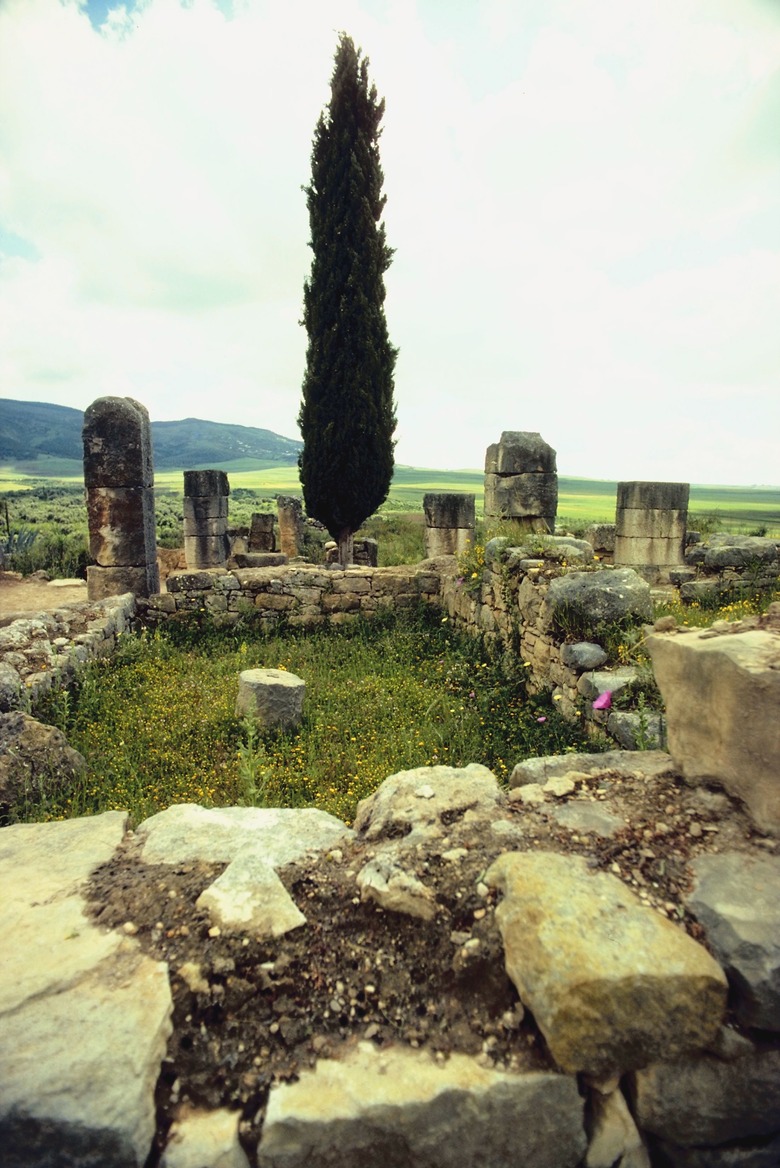What Causes Italian Cypress Trees To Turn Brown?
Italian cypress (Cupressus sempervirens) grows in tall, narrow columns, 40 to 60 feet high and 3 to 6 feet wide. This evergreen has feathery, scale-like green leaves densely covering a grey or brown upright trunk. Its size and shape make the Italian Cypress ideal for lining driveways or for accenting large buildings. The Italian Cypress is a low-maintenance tree; however, poor growing conditions make it susceptible to insects and disease that will turn the leaves brown.
Water
Water
The Italian Cypress is drought-tolerant and needs to dry out between waterings. Too much water or soil with poor drainage will cause the tree to turn brown and can also cause root rot. Too little water will also cause browning. Water to a depth of 24 inches and allow the soil to dry out before watering again. A layer of mulch will also help the soil retain moisture.
Spider MItes
Spider MItes
An infestation of spider mites can cause Italian Cypress trees to turn brown. Spider mites are tiny relatives of spiders that pierce the plant cells and feed on the contents. If you suspect that your Italian Cypress is infested with spider mites, you can spot them by holding a piece of white paper under some leaves and shaking the leaves. Use a magnifying glass to check that those moving specks on the paper are spider mites. Control a small infestation of spider mites by dislodging them periodically with a forceful stream of water. Other treatment options include insecticidal soaps, horticultural oils or a pesticide specifically labeled to fight spider mites.
Needle Blight
Needle Blight
When an unusual amount of leaves turn brown, the tree may have needle blight, a nonparasitic disease. Improper watering, either too much or too little, kills the tree's feeder roots, which in turn affects the leaves and causes needle blight. Severely affected trees may die. Needle blight can be prevented by providing good drainage, the proper amount of water and fertilizing in the spring.
Canker
Canker
Cypress canker is a fungus that infects the tree bark and progressively kills tissue, turning the leaves brown and killing them. Cracks in the bark where a canker developed reveal the area where the fungus invaded the tree. Remove infected branches when the tree has only minimal damage. Once the entire tree has turned brown, it cannot be saved and should be removed to prevent the fungus from spreading to other trees.
Bagworms
Bagworms
Bagworms can attack Italian Cypress trees. When it is a caterpillar the bagworm creates a silken bag for protection that hangs from tree limbs, covering it with pieces of leaves and bark. The caterpillars pass through four molt stages, defoliating the tree as they grow, until developing into an adult. The adult male is a small moth with a black, furry body and transparent wings, but the female has a maggot-like appearance without wings, eyes, antennae, legs, or mouth parts. Her entire function is to live in the silken bag until she lays 500 to 1,000 eggs and then dies. Handpick bagworms from trees or control with applications of Bt (Bacillus thuringiensis) or other pesticides.
References
- University of Florida IFAS Extension; Cupressus sempervirens: Italian Cypress; Edward F. Gilman, et al.; May 2011
- University of Nevada Cooperative Extension; Extreme Horticulture; Robert Morris; January 2009
- Utah State University Extension; Needle Blight of Evergreens; Sherman V. Thomson, et al.; January 1998
- Ohio State University Extension; Spider Mites And Their Control; David J. Shetlar
- University of California Cooperative Extension: Cypress Canker
- Clemson University Cooperative Extension; Leyland Cypress Diseases & Insect Pests; Marjan Kluepfel, et al.; April 2008
